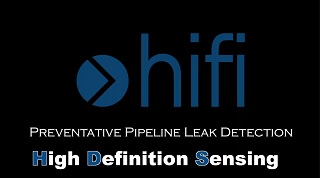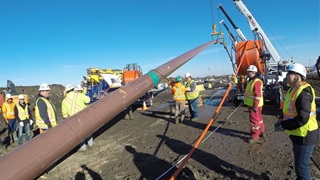A high-fidelity approach to leak detection and incident prevention
Hifi Engineering’s HDS technology attracts attention with pipeline industry partnership, ASBIRI funding
There’s common sense. There’s the proverbial sixth sense.
And then there’s Hifi Engineering’s High Fidelity Dynamic Sensing (HDS) technology, which uses multiple senses—sense of sound, sense of touch—in addition to its optical-based backbone.
Hifi, based in Calgary, is working with Enbridge Inc. and TransCanada Corporation as part of a pipeline industry partnership to test and enhance its HDS system. And today, based on its promising next-generation fiber optic sensing technologies, Hifi was named as the first funding recipient for the Alberta Small Business Innovation and Research Initiative (ASBIRI), offered by Alberta Innovates.
“Really, our specialized fiber is sensing changes in energy—acoustic energy, as a fully distributed microphone; thermal energy, as a fully distributed temperature sensor that’s accurate to 0.001 degrees Celsius; and kinetic energy, like vibration and strain,” says Steven Koles, President and CEO of Hifi.
“We use those variables, all together, for condition monitoring and event detection,” adds Koles. “Leak detection is one type of event, but we also focus on event detection that’s preventative in nature.”
With a successful track record in oil and gas well downhole flow applications, Hifi’s proprietary HDS technology is also proving its chops in the pipeline industry—having been tested in the lab and commercially deployed in the field, and more than 3.2 million “day-feet” of pipeline monitored to date with no false positives.
The technology is suitable for crude oil, bitumen, natural gas, refined products or waste water lines—“pretty much anything under pressure,” says Koles—and the sensing fiber cable can be deployed on the pipe, near the pipe when retrofitted, or even inside the pipe.
Data is collected and analyzed at self-contained transmission stations along a pipeline right-of-way. “Event data” is transmitted securely to the operator’s control center, sometimes over wireless. Confirmed alarms—complete with exact location, audio file, and pertinent strain and temperature measurements—arrive within seconds.
HDS is fine-tuned to recognize:
- Pipeline leak signatures (through a combination of acoustic, vibration and temperature variables);
- Geotechnical events, like landslides, earthquakes or floods (based on abnormal strain or vibration); and
- Right-of-way security intrusions, from excavations to tampering activities to forest fires.
“Our in-situ verification system—that combination of sound, vibration and temperature data—differentiates us from acoustic-only sensors and temperature-only sensors,” says Koles.
Enbridge’s partnership with Hifi will test the capabilities of Hifi’s HDS leak detection system on a long-distance pipeline—specifically, our Norlite diluent line, which entered service this year. Hifi cable has been installed on a 32-kilometer segment of Norlite, including a 966-meter crossing under the North Saskatchewan River northeast of Edmonton.
“We understand this will be one of the longest installations of Hifi technology to date, and we’re looking forward to a successful collaboration with Hifi as they optimize and refine their system for real-world monitoring of pipelines,” says Linda Comand, Vice President of Enbridge’s Technology and Information Services, Liquids Pipelines.
“We’re hopeful this technology can provide Enbridge with enhanced leak detection capability, and complement performance of our current systems—and our multi-layered approach to pipeline safety.”
Over the next three years, this industry partnership will allow Hifi to develop and test enhancements to its HDS system—including data processing speed, longer-distance optics and a system health screen.
“We’re ready,” says Koles, “to demonstrate that our technology is indeed world class.”
(TOP PHOTO: Hifi Engineering's Steven Koles demonstrates the company's HDS leak detection system at Calgary's GE Innovation Centre.)










